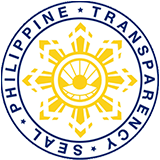Nerizza Faye G. Villanueva | Regional Social Marketing Officer
Cordillera culture is among the most celebrated ways of living in the Philippine archipelago. Various conquerors may have set their foot in the land locked area of the Cordillera Administrative Region but Cordillerans were managed to preserve most of their traditions and beliefs as they opt to treat these as their treasure and identity.
At the onset of the Kapit Bisig Laban sa Kahirapan- Comprehensive and Integrated Delivery of Social Services or Kalahi-CIDSS Project, the marriage of the Cordilleran culture and development has been greatly manifested.
Early on, implementers saw some aspects of the culture as a challenge in the implementation of the Project, but most of the areas in the Cordilleras have built the strong foundation of their success in their culture. For them, the region’s culture was a guide that led them towards improving their situation.
The municipality of Pasil in the Province of Kalinga is one great example of this development. Pasil is among the new guaranteed municipalities that started the Project’s implementation in 2012. As of April 2013, all ten barangays that implemented the Project have already completed the physical implementation of their sub-projects. With this, Pasil is among the top performers of the Kalahi-CIDSS Project in the region.
According to Project Preparation Team volunteer Joseph Fantuyao, this accomplishment of the municipality can be rooted to the strong adherence of the communities to ang-as. Ang-as is a tradition among the pangat or elders in their community. It is a venue on which issues and decisions are talked about. This kind of practice can be traced back even before the Spanish era.
The villagers of Barangay Pugong, to be specific, are the ones who have integrated ang-as in their way of living. Through ang-as, decisions are worked out and concerns are acted upon by all people for their benefit. It is also through ang-as that the community volunteers can share ideas while working together.
The ang-as has greatly influenced how the people of Barangay Pugong implement the Kalahi-CIDSS Project. Although the barangay was the last to start their sub-project implementation, they were able to complete their sub-project on time like most of the Barangays in Pasil. They were able to complete their sub-project which is the improvement of Pugong Drainage System.
This practice has also promoted cooperation and oneness among the people of Pugong. It builds the community. It is the reason why the communities are always at peace with each other. Community problems are easily settled because they have a peaceful venue to talk about the issues and concerns. This gives the community a harmonious way of living while being socially aware and spiritually guided.
The municipality of Luba in the province of Abra also observes a number of practices which is associated to collaboration. These include saad (community practice of extending free labor in construction/repair/transfer of houses where the owner only provides food and drinks for the workers), bang-bang (residential lot preparation where food is the only means of payment for workers), socio or alluyon (practice of cooperation or exchange of labor during rice planting), dang-as (group labor rendered to a family in exchange of a butchered animal, food and drinks), namin or kominyo or ol-ol (obligatory giving of help to the family of the dead), and adang (voluntary giving of help to the family of the dead).
But the most applicable among these practices is the ganap, also called ubra or ubla. This is done when a community counterpart is needed in the implementation of a project. Free labor is readily given by the umili or community members especially during the maintenance of roads, irrigations, school buildings and repair of other communal facilities. Workers are only provided food in exchange of their labor.
As a replacement municipality under the Kalahi-CIDSS, Luba has conducted its Municipal Inter-Barangay Forum for Participatory Resource Allocation (MIBF-PRA). Even so, collaboration is already seen among them by coming up with a coordinated result of their MIBF-PRA where most of them agreed to have a sub-project which would address water problem in their area. Moreover, because of the practices, calling and keeping these people together will never be a problem.
The Tinggians of the Project’s randomly selected municipality, Langiden in Abra also observes tagnawa or ragup. Tagnawa is commonly done when a certain work requires a massive number of people to finish such work in the soonest possible time. Tagnawa or ragup has helped in the implementation in the Kalahi-CIDSS Project by promoting camaraderie and strengthening unity and solidarity among the people of Langiden for fast completion of the tasks. It is also helping in the preservation of the people’s noble practices.
Although these practices come in different names and forms, all of these have a common value that is cooperation. These practices have evolved to be in consonance with the requirements of the Project.
Implementers consider these as good practices in the implementation of the Kalahi-CIDSS Project because these community traditions allowed the Kalahi-CIDSS Project to introduce the community driven development approach. Truly, without the unity among the Cordillerans, it could have been more difficult for the Kalahi-CIDSS Project to succeed in this region. n DSWD-CAR Social Marketing Unit




